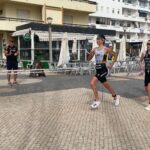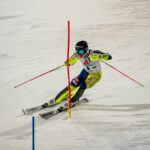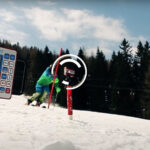It’s late September which means two things. You are in the middle of the fall training block in which you are engaged in an intensive physical conditioning program or are starting to get on snow in Europe for early-season skiing, or both. The next few months before race season will be physically and mentally challenging as you build a solid foundation as you prepare for your first races.
If you’re reading this article, I’m guessing you’re pretty serious about your ski racing. I’m also assuming that, despite being serious about your racing, you do it because it’s big-time fun. Improving, the competition, hanging with your friends, travel, achieving your goals, and, yes, getting the results you want, all make ski racing a fun and exciting sport.
At the same time, no matter how much you love ski racing and no matter how much fun it is in general, you have to admit that there are many specific aspects of our sport that are definitely not fun, especially in fall training. I’m thinking of those cold early morning runs, those mountain bike rides in the rain, those multiple sets of power cleans, and those incredibly intense intervals in the gym.
As I noted in my last post, the fall matters because the physical conditioning you do and the fitness gains you make are essential for success in the coming winter. And let’s be realistic, fall training is hard. It is almost always physically tiring, sometimes repetitive and boring, and more often than not really painful. In other words, some time this fall, you are likely to arrive at a point in physical training when it is no longer fun.
I call this point “the Grind.” The Grind is what often separates ski racers who achieve their goals from those who don’t. The typical reaction to the Grind is to either ease up or give up because it’s just too darned hard. But truly motivated racers realize that the Grind is also the point at which it really counts. They reach the Grind and, instead of easing up, they keep on going and, in fact, push harder because they know that maintaining their effort, intensity, and focus during the last reps, sets, or miles might make the difference between success and disappointment this winter.
Many sport psychologists will say that you have to love the Grind because if you don’t love it, you won’t want to do it. But I say that love isn’t in the cards for almost all racers because there’s not much to love when you are exhausted, hurting, or bored out of your mind. So, you don’t have to love the Grind to push through it. How you respond to the Grind actually lies along a continuum. As I just mentioned, loving the Grind is rare. At the other end of the continuum is “I hate the Grind.” If you feel this way, you are likely going to lose your motivation and give up, so hate isn’t an option either.
I suggest that you neither love nor hate the Grind, just accept it as part of the deal in striving toward your ski racing goals. The Grind may not be very enjoyable, but what feels even worse is failing to achieve your goals because you didn’t work hard enough. And what really feels good is seeing your hard work pay off with success this coming winter. In other words, as I wrote in another previous article, you can pay now or pay later.
So, next time you’re doing dryland and it is REALLY NOT FUN, recognize the Grind, remind yourself how important it is, and push on through it. This winter, when you’ve had some great races, you can then thank yourself for hanging tough when it really mattered.






